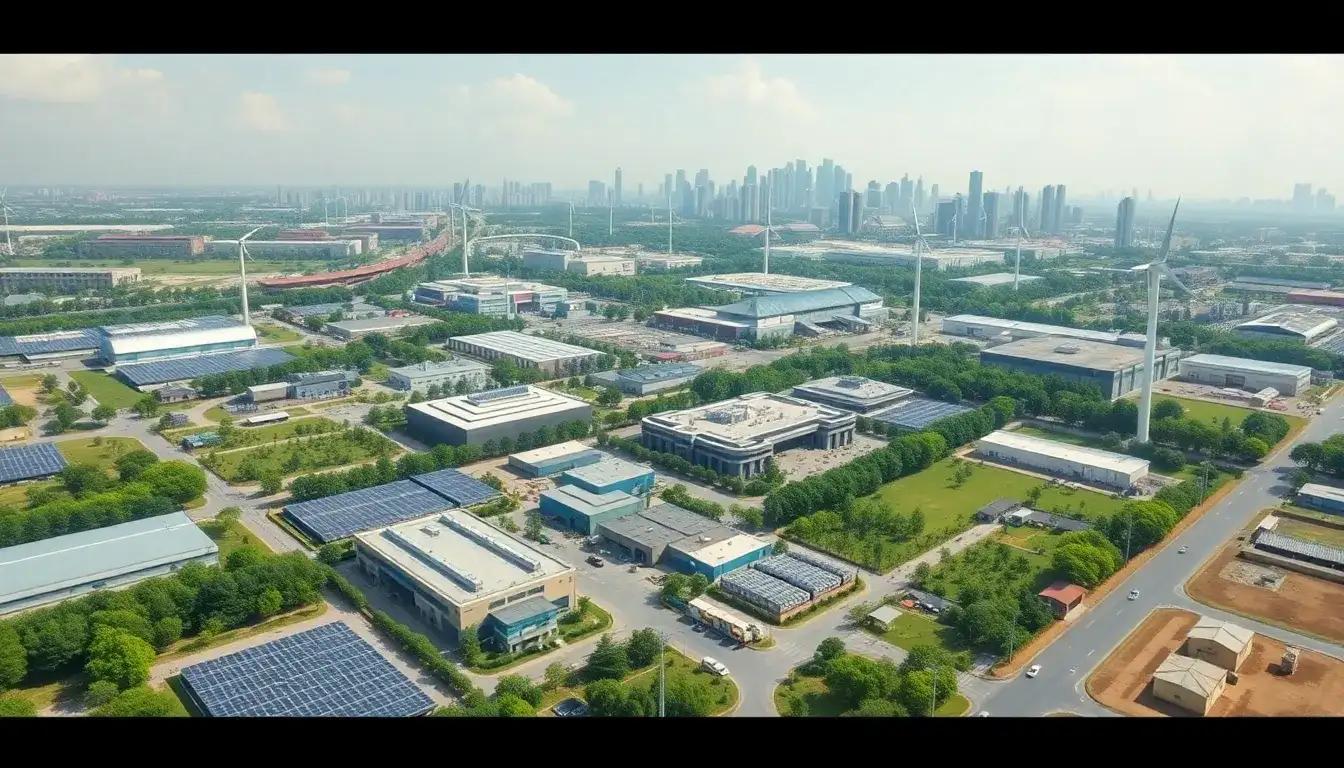
Largest Industrial Park-Level Microgrid in Jiangsu Officially Launched in Changzhou!
Neatly arranged photovoltaic panels atop factory rooftops gleam under the sunlight, showcasing the wonders of light and energy. Under the management of an energy control system, the energy storage devices within the park charge and discharge in an orderly manner, while charging stations intelligently adjust their power output. Detailed data on power generation and energy saving emissions are vividly displayed in the energy flow diagram. This illustrates the real-world application of the Wujin High-Tech Microgrid.
Recently, Jiangsu Province’s largest industrial park-level microgrid commenced operations at the Wujin National High-Tech Zone Innovation Industrial Park in Changzhou. This project holds significant demonstration value for the large-scale application of new energy in industrial parks. A microgrid is a small-scale power system composed of distributed energy sources (such as photovoltaic and wind power), energy storage devices, local power loads, and energy management systems. It can either connect to the main grid or operate independently (in island mode).
The Innovation Park microgrid was developed through a collaboration between Changzhou Binhu Construction Development Group Co., Ltd. and State Grid Changzhou Power Supply Company. It covers an area of 370,000 square meters, with an annual electricity consumption of approximately 42 million kilowatt-hours. The project includes 1.61 megawatts of distributed photovoltaic systems and 6,035 kilowatts/10,660 kilowatt-hours of energy storage facilities, providing stable and reliable green energy to buildings, factories, and electric vehicles.
Chen Liang, General Manager of the Wujin District Power Supply Branch of State Grid Changzhou Power Supply Company, noted that this project implements multiple microgrid technology validations and demonstrations, offering replicable and scalable technical solutions for building green, near-zero carbon industrial parks. The project has developed a microgrid control platform, serving as the “smart brain” of the park, enabling coordinated regulation of photovoltaic, energy storage, charging facilities, and air conditioning resources on the user side.
“By analyzing weather, traffic, and historical electricity consumption data, the park’s microgrid can accurately predict electricity demand and intelligently schedule various adjustable resources to achieve efficient energy utilization and optimize operational costs,” Chen stated. The control platform also effectively aggregates adjustable load resources such as air conditioning, air compressors, and production lines to participate in virtual power plant auxiliary services.
In terms of the direct current microgrid demonstration, an integrated photovoltaic-storage-charging direct current microgrid system has been established on the southeast side of the park. This system can connect to the main grid or operate independently, meeting the electricity needs of 27 charging parking spaces. Compared to traditional alternating current networks, the absence of conversion between alternating and direct current leads to an energy loss reduction of over 10%.
Regarding the demonstration of energy storage technology, the project includes lithium batteries, sodium batteries, and new water-based metal batteries, exploring the collaborative operation of various storage technologies. The 150 kilowatt-hour new water-based metal battery boasts significant environmental and safety advantages. “As an emerging energy storage solution, the new water-based battery technology has gained considerable attention in recent years, marking its first domestic application in this project. The comprehensive application of various energy storage technologies in the Innovation Park enables the storage system to possess both high capacity and high power characteristics, achieving ‘ample power and fast charging/discharging’,” explained Sun Jinpeng, a technology expert from Yichuang Energy Technology (Jiangsu) Co., Ltd.
The Innovation Park microgrid has achieved goals of increasing green energy, stabilizing the grid, reducing costs, and ensuring supply through diversified resource allocation. Once operational, it is expected to save approximately 4.6 million yuan in energy costs annually and reduce carbon dioxide emissions by 7,585 tons, with an investment recovery period of around 4.5 years.
In March of this year, Changzhou became the first city in the province to release the “Changzhou Three-Year Action Plan for Accelerating the Construction of a New Energy System (2025-2027),” with plans to develop 300 microgrid projects over the next three years. Additionally, it launched the province’s first comprehensive microgrid solution service platform, “I Want to Build a Microgrid,” which customizes microgrid solutions for electricity users. Currently, the city has completed 39 microgrid projects and aims to finish 100 more by the end of this year.
Microgrids are becoming key components in accelerating the establishment of a new energy system in Changzhou. On March 28, the Jiangsu Province Microgrid Industry Chain Connection Conference and Changzhou Microgrid Urban Construction Promotion Meeting were held. Changzhou plans to integrate microgrids with the cultivation of new productivity, the construction of a new energy system, and urban development through green transformation in key sectors, building near-zero carbon parks, smart factories, and low-carbon communities to expedite energy transformation and promote green industry advancements.







